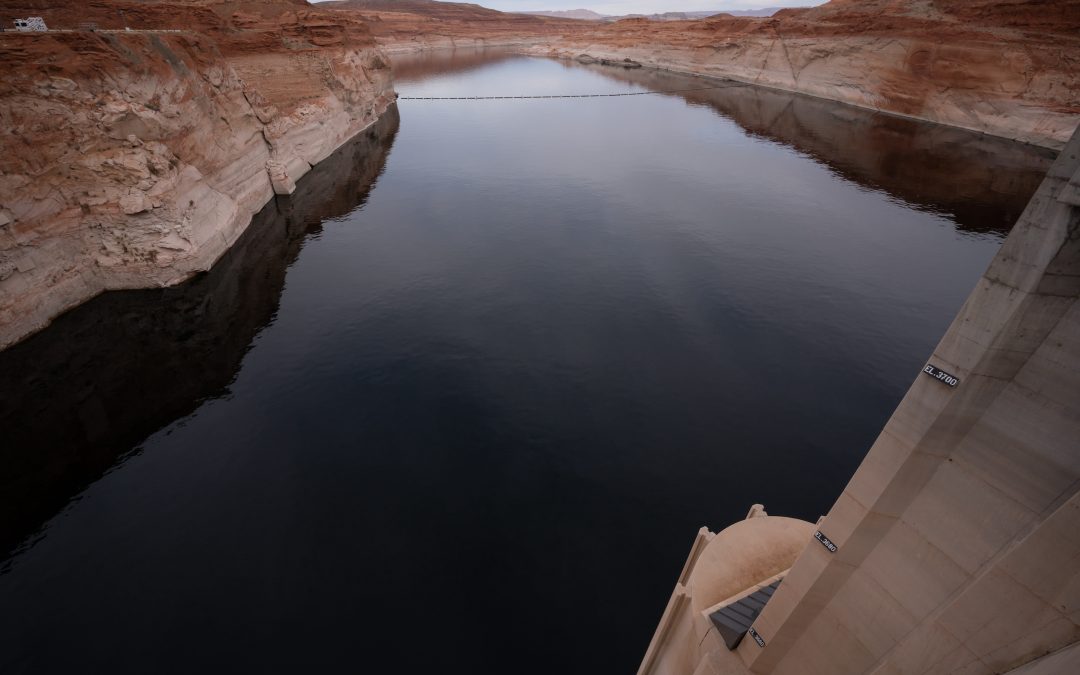Federal forecasts for the Colorado River’s water supply — the water source for 40 million people — predict a substantial drop as the snow season limps into the new year.
Water flowing into Lake Powell is forecasted to be 79% of its historical average, according to a December monthly report from the U.S. Bureau of Reclamation. One major cause is the poor showing of snow in the Rocky Mountains, but it’s not time to panic yet, water experts say.
“It’s December, we still have several months of accumulation potential,” said Russ Schumacher, Colorado’s state climatologist. “There’s no reason to freak-out about solely the fact that snowpack is low at this point because there’s still time to make that up. But we also know that, as the climate has been warming, the snowpack that we do get doesn’t go quite as far.”
In the Colorado River Basin, which stretches across seven Western states, a system of reservoirs catches water and meticulously times releases to provide a steady flow to farms, cities, industries and ecosystems around the basin.

The largest reservoirs are Lake Powell on the Utah-Arizona border and Lake Mead on the Arizona-Nevada border. Together, they can store up to 53.9 million acre-feet of water, or about 92% of the reservoir storage capacity in the entire Colorado River Basin.
A bad water year — with below-average precipitation and hotter conditions — could send the reservoirs back toward dangerous lows, experts say. At Lake Powell, Glen Canyon Dam can no longer generate hydroelectric power when the water level falls below 3,490 feet or release water at all when the level falls below 3,370 feet.
That estimate has dropped by nearly 2 million acre-feet. The December forecast estimates the reservoir will receive about 7.62 million acre-feet of water by September, about 79% of the 30-year average from 1991 to 2020.
Two million acre-feet is enough water to fill Blue Mesa twice over — the largest reservoir in Colorado — or to supply one year of water for about 4 million typical urban households.
For reference, last year’s record snowpack sent more than 12 million acre-feet of water into the immense reservoir.
Even with just 7.62 million acre-feet expected to flow into Powell, Glen Canyon Dam is set to release 7.48 million acre-feet of water downstream to Lake Mead, an amount set by interstate agreements that govern how the reservoirs operate.
Some projections indicate that the reservoir levels could fall low enough to trigger more emergency releases into Lake Powell from Upper Basin reservoirs, like Blue Mesa, which sits on the Gunnison River near the city of Gunnison.
River officials called on Blue Mesa to send water down to Lake Powell in 2021 to boost the reservoir’s water levels. That debt will be repaid by the end of December, said Chuck Cullom, executive director for the Upper Colorado River Commission, an interstate body that helps manage the Colorado River’s water.
“Between now and 2026, I would just highlight for folks that it could be Groundhog Day in the early spring and summer about declining towards critical elevations,” Cullom said during an Upper Colorado River Commission meeting Dec. 13 in Las Vegas.
The accumulation of snow in the mountains of Colorado, Wyoming and Utah provides much of the water for the Colorado River Basin. So far, that snowpack is off to a poor start, Schumacher said.
Federal data shows that the snowpack in the Upper Basin — Colorado, New Mexico, Utah and Wyoming — is the third lowest for the end of December since 1986, he said.
It’s similar to 2018, a year no one wants to repeat in the Southwest, Schumacher said.
“That was a year that started off bad and never recovered,” he said.


 Print
Print